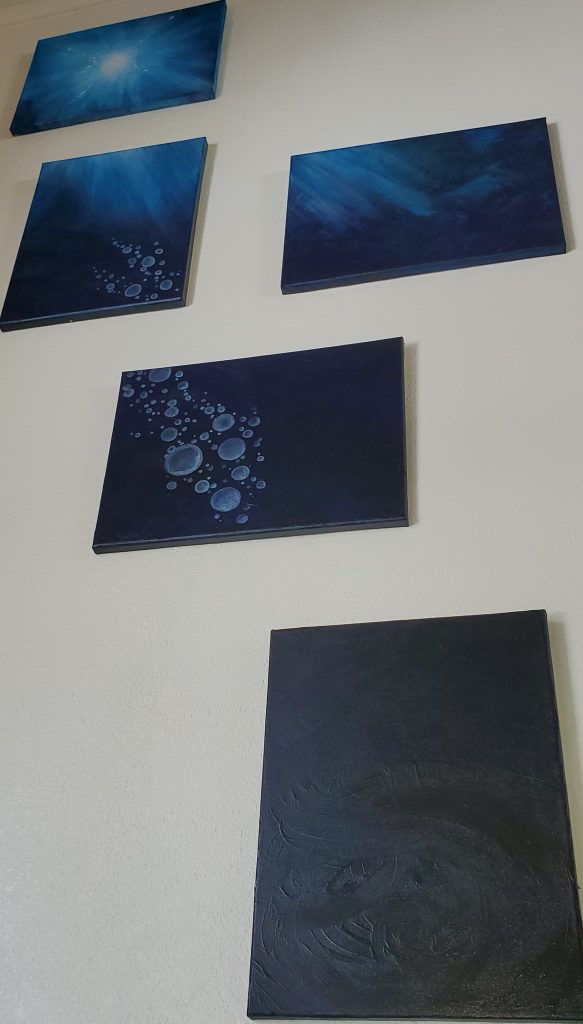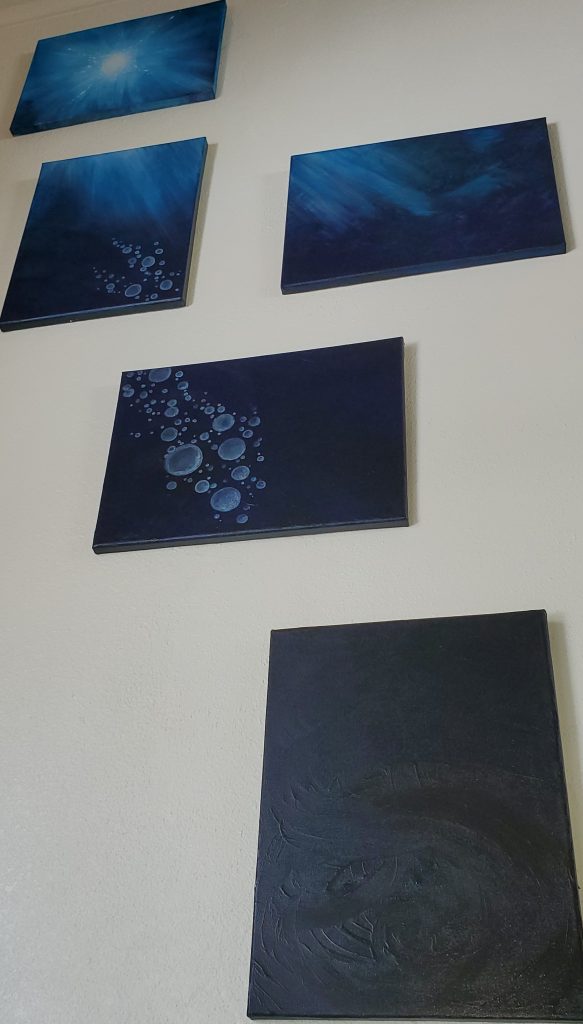
The topic of my STEAM project is how Hydrogen Cyanide gas lethally obstructs the hemoglobin in our red blood cells from picking up and transporting oxygen. Our cells and organs suffocate from lack of oxygen even though we keep breathing, this is called metabolic asphyxiation. When hydrogen cyanide is inhaled it does not damage the respiratory system itself but it stops our ability to carry oxygen with results in systemic failure and rapid death. We basically drowned on the gas, much the same as we would in deep water, thus the painting instillation I created.
There is a great deal of information about the dangers of carbon monoxide (CO) poisoning associated with fires and heating equipment. At this point most Alaskans have CO alarms in their homes right next to the smoke detector. Unfortunately, another danger to first responders such as firefighters and medics, along with victims encountering fire smoke, especially in structure fires, is hydrogen cyanide (HCN). Research indicates that HCN is 35 times more toxic than CO. This is a common and deadly threat that could affect any of us, so sharing this information is vital.





Adrianna’s steam project is on the dangers of hydrogen cyanide gas. Hydrogen cyanide will block the body’s ability to gather and transport oxygen throughout the body which would cause catastrophe to hit the entire body. Hypoxemic hypoxia occurs as the body isn’t getting enough oxygen from red blood cells. The lack of oxygen to organs and cells would cause almost every vital system in the body to shut down and can cause death within a couple of minutes. Hydrogen cyanide doesn’t attack the lungs as there is no harm done to them, but it affects the cardiovascular system. Most people understand that building fires have many dangers such as smoke, carbon monoxide, and fire(duh!). Hydrogen cyanide has flown under the radar when it comes to the knowledge of the dangers of gases that someone could be exposed to during a fire. Hydrogen cyanide could be up to 35 times more toxic than the more well-known carbon monoxide.
Adrianna’s paintings depict what suffering from hydrogen cyanide inhalation would be like. It would like like if someone who has inhaled hydrogen cyanide would feel as if they’re drowning. Someone may even feel as if their breathing is relatively normal, but still never gets the oxygen that is needed.
Adrianna’s steam project gives information on an important issue that not many people in the general public know about. It’s obvious that Adrianna put lots of time and research into her project.